Irish farmers have taken a hit on beef prices over recent weeks, even though they are holding up better in our main export markets in the UK and EU.
Securing the reopening of exports to China at the start of 2023 was hoped to be the beginning of a successful trading relationship with the world’s biggest beef and sheep meat importer but so far that has failed to materialise.
Unfortunately, from an Irish viewpoint, the prices being paid in China are much lower than they were in recent years, no doubt driven by increased supplies from Argentina, Brazil, Australia and the United States. Along with Uruguay and New Zealand, these countries accounted for 98% of Chinese beef imports in 2022.
Exports
Brazil was the number one exporter of beef in the world during the first five months of 2023 and while their overall volumes are running behind the same period in 2022, they are expected to recover and actually finish ahead of last year.
Being suspended from China for a period from January to March curtailed their export activity and interestingly for May, their exports were 190,536t (ABIEC), 15,300t higher than in May 2022. Worryingly, the value of these exports dropped considerably at an average of $5,000 per tonne (t) compared with $6,160t in May 2022.
Argentina, who are the world’s fourth biggest beef exporter, increased volumes by 22% in May compared with the previous month to 65,100t according to Government export data. This was also 13% higher than volumes in May 2022 and was in fact the highest monthly total since November 2020.
Australia, which came in at number three in the exporting countries league, has had a surge in exports during the period to end of May, up 20% or 65.368t. New Zealand’s beef exports to the end of April are up by just under 5% or 7,856t more than for the same period last year.
The only major exporter that has posted a major decline consistently in 2023 is the USA following record export volumes in 2022. US cattle supply has tightened in the early part of the year and as a result volumes are down by 8% to 437,910t, while the value fell by 21% to $3.2bn.
Imports
China, the world’s biggest beef importer, increased volumes in the first quarter of the year to 633,000t but imports have since slowed. The US who uniquely are the second largest importer of beef as well as being the second largest exporter, took 583,056t up to middle of June, 2% down on the equivalent period last year. The EU have increased imports for the first quarter of 2023, up 7% to 89,407t.
Comment
All major beef exporting countries with the exception of the US have more beef to sell this year than they did last year. With China, the biggest importer paying less and looking for less volume, it means that global markets are more competitive this year than in 2022 with corresponding price pressure.
So far, the UK market has been outside this competitive space, guarded by a retailer and burger chain commitment to selling British and Irish beef. This has meant that the value of UK cattle is retained but there has been huge pressure on Irish beef prices as UK buyers realise that unlike this time last year, there aren’t the same options for Irish beef in EU or international markets.
Read more
Finishers losing €300 per head on spring stores
All eyes on opening weanling sales next week
EU-Australia trade deal imminent
Irish farmers have taken a hit on beef prices over recent weeks, even though they are holding up better in our main export markets in the UK and EU.
Securing the reopening of exports to China at the start of 2023 was hoped to be the beginning of a successful trading relationship with the world’s biggest beef and sheep meat importer but so far that has failed to materialise.
Unfortunately, from an Irish viewpoint, the prices being paid in China are much lower than they were in recent years, no doubt driven by increased supplies from Argentina, Brazil, Australia and the United States. Along with Uruguay and New Zealand, these countries accounted for 98% of Chinese beef imports in 2022.
Exports
Brazil was the number one exporter of beef in the world during the first five months of 2023 and while their overall volumes are running behind the same period in 2022, they are expected to recover and actually finish ahead of last year.
Being suspended from China for a period from January to March curtailed their export activity and interestingly for May, their exports were 190,536t (ABIEC), 15,300t higher than in May 2022. Worryingly, the value of these exports dropped considerably at an average of $5,000 per tonne (t) compared with $6,160t in May 2022.
Argentina, who are the world’s fourth biggest beef exporter, increased volumes by 22% in May compared with the previous month to 65,100t according to Government export data. This was also 13% higher than volumes in May 2022 and was in fact the highest monthly total since November 2020.
Australia, which came in at number three in the exporting countries league, has had a surge in exports during the period to end of May, up 20% or 65.368t. New Zealand’s beef exports to the end of April are up by just under 5% or 7,856t more than for the same period last year.
The only major exporter that has posted a major decline consistently in 2023 is the USA following record export volumes in 2022. US cattle supply has tightened in the early part of the year and as a result volumes are down by 8% to 437,910t, while the value fell by 21% to $3.2bn.
Imports
China, the world’s biggest beef importer, increased volumes in the first quarter of the year to 633,000t but imports have since slowed. The US who uniquely are the second largest importer of beef as well as being the second largest exporter, took 583,056t up to middle of June, 2% down on the equivalent period last year. The EU have increased imports for the first quarter of 2023, up 7% to 89,407t.
Comment
All major beef exporting countries with the exception of the US have more beef to sell this year than they did last year. With China, the biggest importer paying less and looking for less volume, it means that global markets are more competitive this year than in 2022 with corresponding price pressure.
So far, the UK market has been outside this competitive space, guarded by a retailer and burger chain commitment to selling British and Irish beef. This has meant that the value of UK cattle is retained but there has been huge pressure on Irish beef prices as UK buyers realise that unlike this time last year, there aren’t the same options for Irish beef in EU or international markets.
Read more
Finishers losing €300 per head on spring stores
All eyes on opening weanling sales next week
EU-Australia trade deal imminent




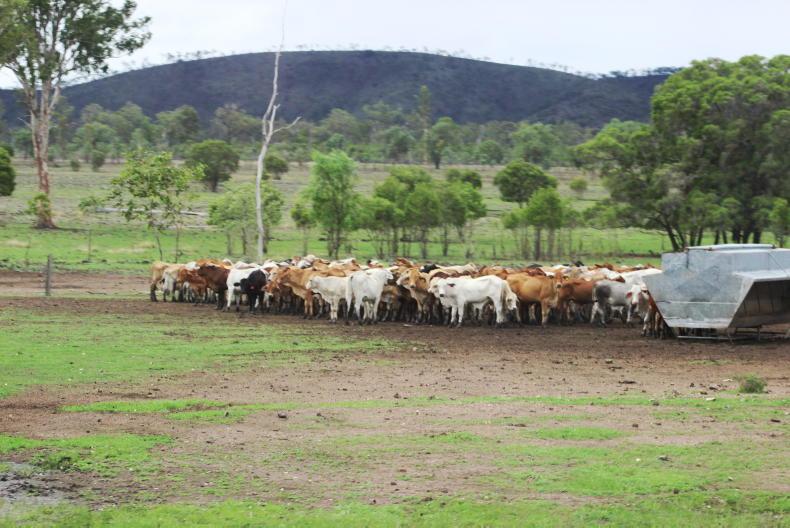
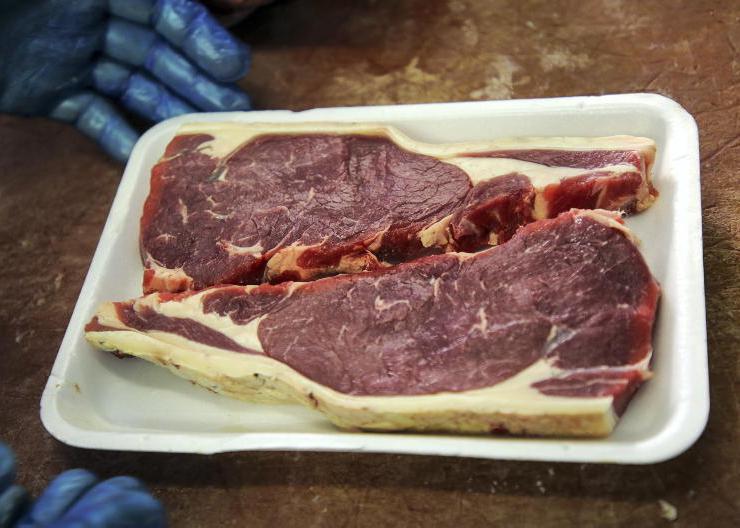
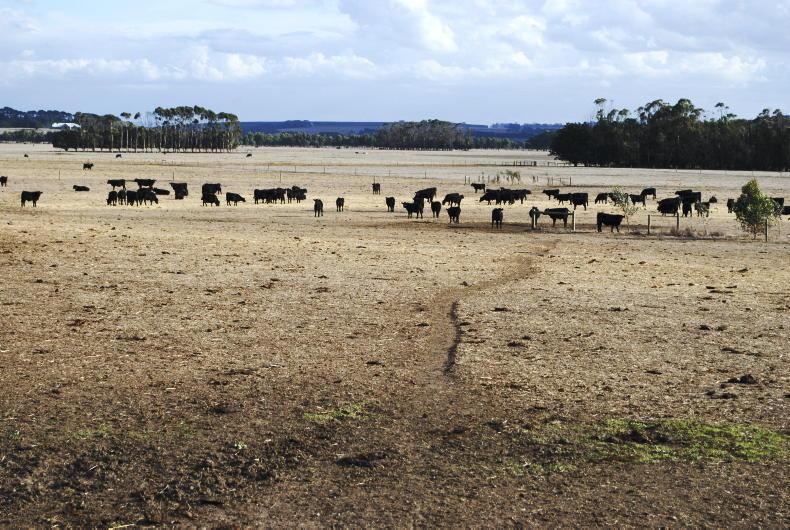
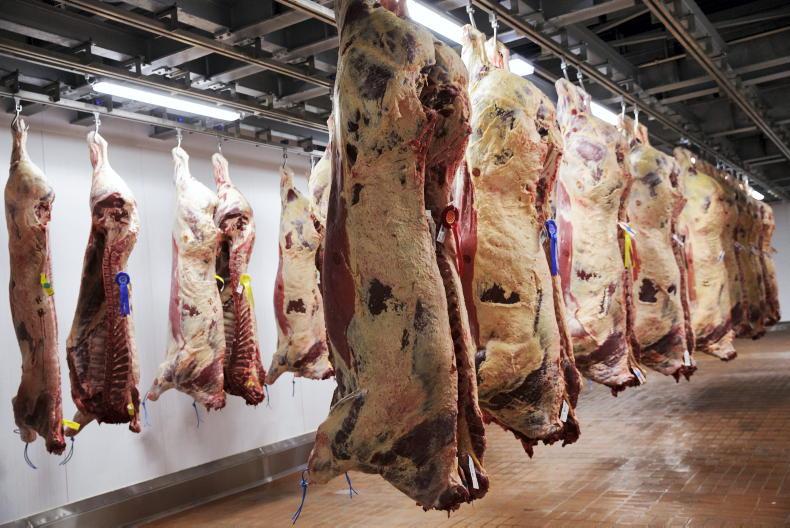
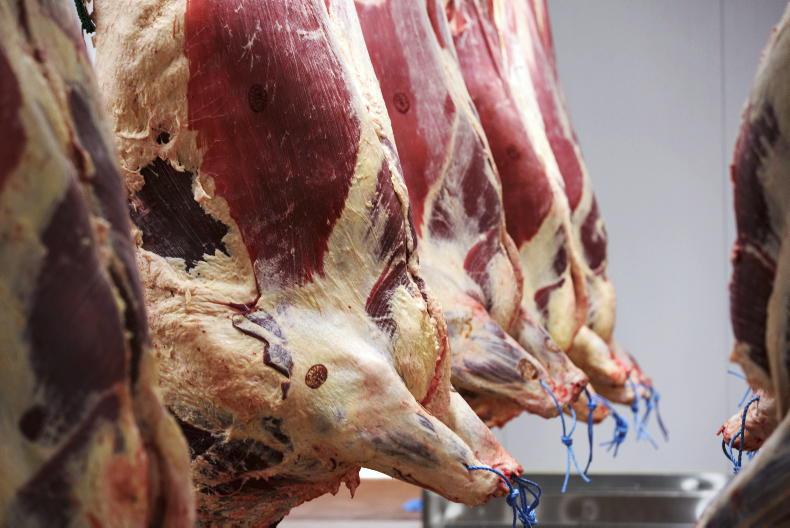
SHARING OPTIONS